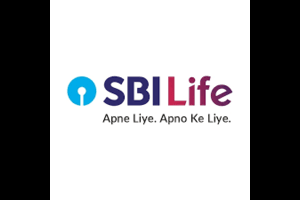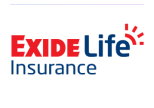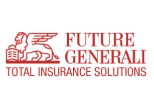Variable Life Insurance: A Smarter Way to Protect and Grow Your Wealth

When choosing life insurance, most people look for two things: financial protection for their family and some way to grow their money. Variable life insurance offers both. It gives you lifelong coverage and the ability to invest your money in market-linked options like stocks and bonds.
Unlike traditional life insurance plans, where returns are fixed, variable life insurance lets you take advantage of market growth. But it also means your cash value and death benefit can go up or down depending on how your investments perform. That’s why understanding how it works, along with the risks and benefits, is essential before you sign up.
If you’re looking for flexible coverage, long-term financial growth, and tax savings, this guide will walk you through everything you need to know.
Key Highlights
- Lifelong Coverage with Investment Growth: Combines permanent life insurance with market-linked returns.
- Flexible Investment Choices: Allocate funds across equity, debt, or balanced options based on your goals.
- Adjustable Premiums: Modify premium payments after the initial term to suit your financial needs.
- Tax Benefits: Enjoy tax-free death benefits and tax-deferred growth on investments.
- Access to Cash Value: Borrow or withdraw from your policy’s cash value when needed.
Table of Contents
- What is Variable Life Insurance?
- Key Features of Variable Life Insurance
- Benefits of Variable Life Insurance
- How Variable Life Insurance Works
- Example: How Your Policy Might Grow
- Types of Variable Life Insurance Policies
- Before You Buy: Ask Yourself These Questions
- Factors to Consider Before Choosing Variable Life Insurance
- Pros and Cons of Variable Life Insurance
- Who Should Consider Variable Life Insurance?
What is Variable Life Insurance?
Variable life insurance is a hybrid policy that combines life insurance protection with investment opportunities. A part of the premium you pay goes toward a death benefit (which your family receives if something happens to you), and the rest is invested in funds like stocks, bonds, or money markets.
Your policy’s cash value grows based on how these investments perform. This gives you control over how your money grows, along with the safety net of insurance.
Key Features of Variable Life Insurance
Variable life insurance policies stand out through several distinctive characteristics. Understanding these key features, helps you to make informed decisions regarding this unique policy. Here are the most notable key features:
- Permanent Coverage: The policy protects you throughout your lifetime with consistent premium payments. Coverage remains active regardless of health changes or age.
- Investment Component: Policyholders direct their cash value into chosen investment vehicles like stocks and bonds. This feature enables potential growth through market participation.
- Cash Value Sensitivity: Investment performance directly affects the policy's cash value, creating growth opportunities and risks.
- Customizable Death Benefit: The death benefit includes both guaranteed protection and growth potential through successful investments.
- Loan Options: The policy enables borrowing against accumulated cash value for financial needs.
Benefits of Variable Life Insurance
Variable life insurance offers distinct advantages that align with comprehensive financial planning goals. Understanding variable life insurance benefits helps evaluate the policy's role in your financial strategy.
1. Market-Linked Growth
A portion of your premium is invested in funds you select. This gives your money the chance to grow like it would in a mutual fund or retirement account. You can adjust your investment strategy based on your goals and how much risk you're comfortable taking.
2. Premium Flexibility
After the first policy year, you can adjust how much you pay (within limits). This means you can pay more during good financial years and less during tight ones—without losing your coverage.
3. Variable Death Benefit
Your family is guaranteed a minimum death benefit, but if your investments do well, that benefit can increase. Poor performance can reduce it, but the base amount is always protected.
- Cash value grows tax-deferred.
- Death benefit is usually tax-free.
- You can take policy loans without immediate tax implications.
5. Living Benefits
You can borrow or withdraw from the accumulated cash value for emergencies, education, or major expenses. Just keep in mind, this might reduce the death benefit.
How Variable Life Insurance Works
Variable life insurance combines lifelong coverage with investment opportunities, offering a unique approach to financial planning and protection. The policy maintains coverage throughout your lifetime while allowing you to build financial value through market investments. The policy's value is determined by five key factors, such as:
- Insurance Component
- Investment Component
- Policy Fees
1. Insurance Component
Every variable life policy guarantees a minimum death benefit for beneficiaries. This core protection remains as long as you pay the required premiums. A strong investment performance can increase the death benefit over time. This guaranteed minimum financial security is provided regardless of market conditions. Beneficiaries also receive the death benefit tax-free upon the insured’s passing.
2. Investment Component
The policy allocates a portion of your premiums to the investment options you select. These investments function similarly to mutual funds, allowing you to participate in market growth potential. You can choose from various investment vehicles, including:
- Stock-based funds for growth potential
- Bond funds for steady income
- The money market accounts for the stability
- Fixed-rate accounts with guaranteed minimum returns, often around 3%
3. Policy Fees
Insurance companies assess several charges to maintain the policy:
- Administrative fees for policy management
- Mortality and expense risk charges
- Investment management fees for chosen funds
- Premium fees to cover operational costs
Variable life insurance also depends on premium payment options after the initial period. You can adjust your contributions based on your financial situation, though maintaining minimum required payments ensures policy continuation. This flexibility allows you to increase investments during prosperous times or reduce them during financial constraints.
The policy's cash value component grows tax-deferred, responding to market performance. Policyholders can access accumulated funds through loans or withdrawals for various financial needs. This feature creates a living benefit alongside the primary insurance protection.
Example: How Your Policy Might Grow
Let’s say you invest ₹1,00,000, split equally between a stock fund and a bond fund.
- Stock fund grows by 8%
- Bond fund grows by 4%
Your total value becomes ₹1,06,000 before fees. Your policy’s growth will vary year to year based on market performance.
These components help you evaluate whether variable life insurance aligns with your financial goals. However, regular monitoring and adjustment ensure the policy continues to meet your evolving needs.
Types of Variable Life Insurance Policies
Modern insurance markets offer multiple variable life policies. Each type serves specific financial goals and risk preferences. Insurance companies customize these policies for different market segments as per the customer needs. Here are some of the most notable types of Variable Life Insurance in India:
1. Unit-linked Insurance Plan (ULIP)
ULIPs combine insurance coverage with market-linked investments in India. Policyholders choose from multiple fund options based on risk tolerance. Investment returns directly reflect underlying fund performance. These plans offer tax benefits under current Indian tax laws. ULIPs help build long-term cash accumulation while providing life coverage.
2. Indexed ULIP
For those seeking a more structured approach, Indexed ULIPs track specific market benchmarks like the Nifty 50. These policies invest in funds that replicate the chosen index’s portfolio, offering the growth potential of equity markets while incorporating protective features through debt and fixed-income components. This balanced approach helps manage risk while maintaining growth opportunities.
3. Variable Annuity
Variable annuities focus on retirement planning with life insurance benefits. Investors build savings during their working years through diverse funds. The accumulated amount converts to regular income in retirement. This provides lifetime income security after retirement. However, investment choices during accumulation affect future payment amounts.
4. Endowment Plan
Endowment plans address short-term financial goals while maintaining insurance protection. These policies invest premiums in both debt and equity markets, building cash value over time. Upon maturity, surviving policyholders receive a lump sum payment, making these plans suitable for specific objectives like funding education or major events.
5. Child Plan
Child plans focus on securing a child’s future, such as higher education or marriage expenses. These specialized policies typically span 10 to 25 years, investing premiums according to the chosen risk profile. They incorporate protective features that ensure continued premium payments and benefits if a parent passes away unexpectedly. It guarantees the child’s financial security regardless of circumstances.
Before You Buy: Ask Yourself These Questions
Variable life insurance isn’t for everyone. Ask yourself these questions before you decide:
- Do I understand investments or have access to an advisor?
- Can I commit to long-term premium payments, even during tough times?
- Am I okay with seeing my policy’s value rise and fall with the market?
- Have I compared fees from different insurers?
- Do I want flexibility in how I manage my policy?
- Am I aware of the tax rules for loans, withdrawals, and payouts?
Factors to Consider Before Choosing Variable Life Insurance
Variable life insurance combines investment opportunities with death benefit protection. Careful evaluation of several key factors ensures whether this policy aligns with your long-term goals. Let’s look into key factors that you should consider before choosing variable life insurance:
1. Investment Component
Investment expertise influences the success of variable life policies significantly. The policy's investment component requires active management and understanding of market dynamics. Consider your investment knowledge or access to financial advisors who can guide portfolio decisions effectively.
2. Financial Stability
Financial stability plays a crucial role in maintaining variable life insurance. Premium payments must continue regardless of market performance. Assess your ability to maintain consistent payments through various economic conditions. Factor in potential premium increases and market fluctuations when planning long-term affordability.
3. Risk Tolerance
Risk tolerance affects investment choices within variable life policies directly. Market volatility impacts both death benefit values and cash value accumulation. Evaluate your comfort level with investment risks and potential value fluctuations. Your age, financial goals, and retirement timeline influence appropriate risk levels.
4. Fees and Charges
Fees and charges require thorough examination before commitment. Variable life insurance includes mortality charges, administrative fees, and investment expenses. Compare these costs across different providers and policy types. Understanding fee structures helps predict long-term policy performance accurately.
5. Management Flexibility
Management flexibility varies among variable life insurance providers significantly. Some policies offer broader investment options and more frequent reallocation opportunities. Others maintain stricter limitations on investment changes and withdrawals. Review these features against your desired level of portfolio control.
6. Tax Benefits
Consider the tax implications of variable life insurance carefully. While death benefits generally remain tax-free, other transactions may trigger tax obligations. Consult tax professionals about the potential implications of policy loans or surrenders. Understanding tax consequences helps optimize policy usage for estate planning.
Pros and Cons of Variable Life Insurance
Before choosing variable life insurance, it is imperative to understand its pros and cons. Here’s a table for your reference:
|
Pros |
Cons |
|
Higher return potential |
Market-linked value can fluctuate |
|
Premium flexibility |
Typically higher fees than traditional policies |
|
Tax-deferred growth |
Complex product requiring regular oversight |
|
Lifetime coverage |
Early termination may involve steep penalties |
|
Access to cash value |
Poor investment performance may reduce benefits |
Who Should Consider Variable Life Insurance?
Variable life insurance serves specific financial planning needs and suits particular investor profiles. Therefore, understanding your financial stability and risk tolerance helps determine if this policy meets your goals.
1. Affluent Professionals
High-earning individuals seeking tax-advantaged investment opportunities alongside life insurance protection benefit from variable policies. These professionals can maximize premium payments during peak earning years while building tax-deferred wealth.
2. Long-term Investors
People with a time horizon of over 15 years can better weather market volatility and potentially achieve higher returns. The extended timeframe allows for recovery from market downturns while building substantial cash value.
3. Estate Planning Focused
Individuals concerned with efficient wealth transfer to heirs find value in variable life insurance. The death benefit provides tax-free inheritance, while the investment component offers growth potential for legacy planning.
4. Risk-Tolerant Individuals
Those comfortable with market fluctuations and actively managing investments align well with variable policies. Knowing market dynamics and maintaining a long-term perspective helps maximize variable life insurance benefits.
5. Retirement Planners
People seeking supplement retirement income through policy loans or withdrawals may benefit from variable life insurance’s investment potential and tax advantages. The cash value component can provide additional retirement funding options.
Variable life insurance offers unique advantages for individuals seeking both protection and investment growth potential. While it provides flexibility and market participation opportunities, carefully consider your financial goals and risk tolerance before choosing this option. The policy’s success depends on market performance and your investment choices, making it essential to regularly review and adjust your strategy.
For high-net-worth individuals seeking market participation alongside life coverage, variable life insurance can provide an effective solution. However, consulting with financial experts remains crucial for making an informed decision aligned with your specific needs.
Secure your family's financial future with InsuranceDekho’s Variable Life Insurance. Need help choosing the right coverage? Try our Life Insurance Calculator for a personalized plan.




























































